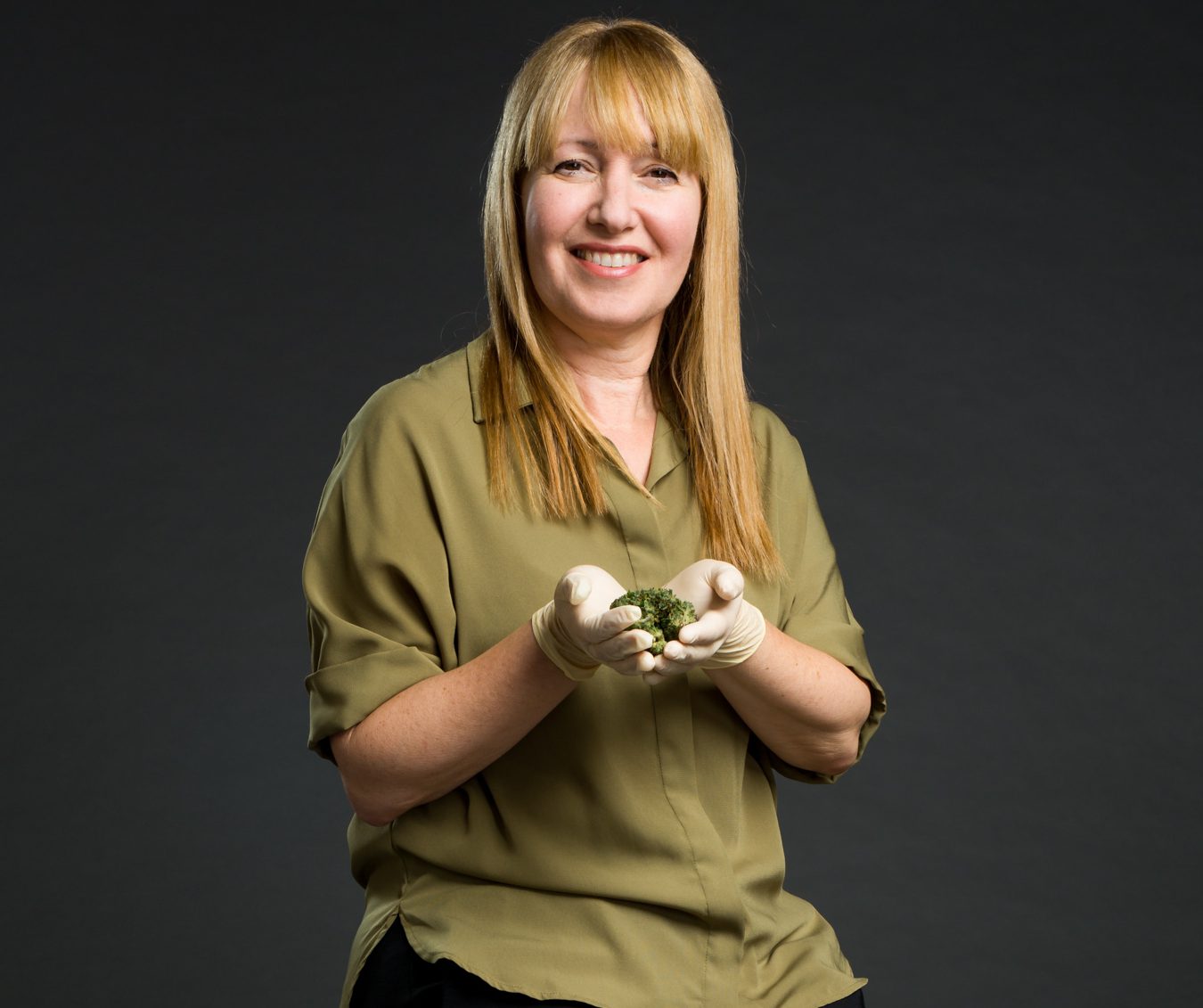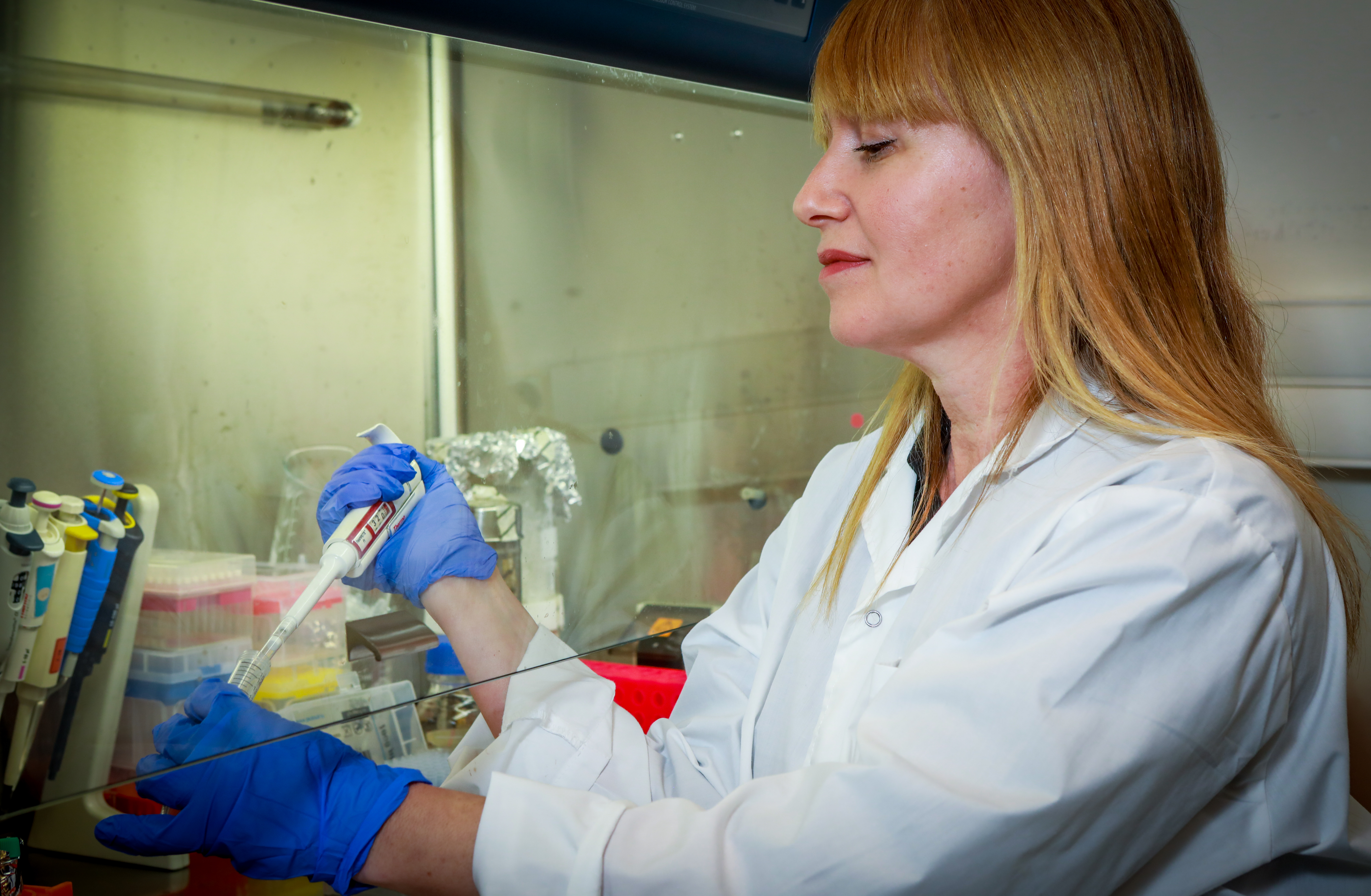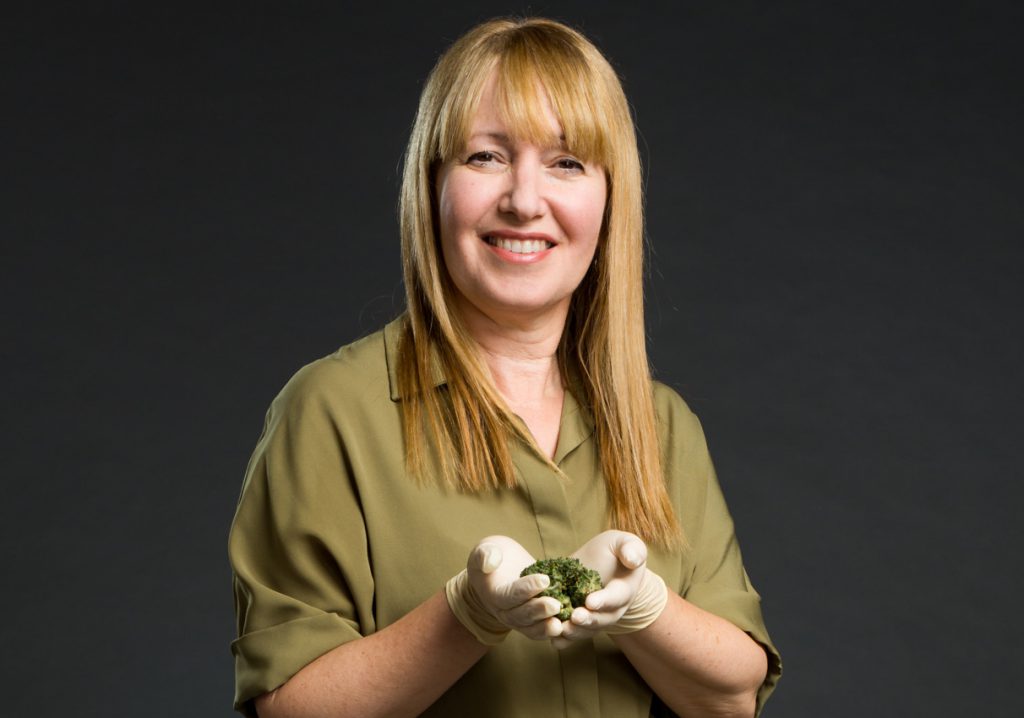In recent years, it seems that one of the key buzz words in Israeli society which immediately garners interest and ignites strong opinions, is “cannabis”. From popular culture to the political and media landscape, for the various governmental ministries and the profit reports of commercial enterprises and laboratories of universities and research institutes – cannabis has gone from being marginalized and prohibited to being one of the hottest substances of our time.
One of the levels on which this plant has gained particular attention is in the scientific-medical field, and Israel is one of the countries leading this global trend. Take, for instance, the cannabis reform passed by the Ministry of Health this year intended, first and foremost, to make consumption of medical marijuana by designated patients easier, and to open up the market.

“I think we are in a gradual, pioneering process of medicalizing cannabis,” says Professor Hinanit Koltai, senior researcher of plant science at the Agricultural Research Organization (the Volcani Institute) of the Ministry of Agriculture and a (voluntary) lecturer at the Faculty of Life Sciences at Bar Ilan University. “There are no other countries undertaking this process at the same level as Israel. As an observer from the side, it’s also obvious to me that as with any process, there are difficulties, ups and downs,” she says, referring to the harsh birth pains that have come with the reform these days, such as the various stories from patients who have found themselves without the substance precisely as a result of the reform. “But ultimately, the process will be for the greater good of patients. For our part, I hope that the science we are doing and its results will also help improve patients’ lives as much as possible.”
Koltai’s hope is that everyone join in on this. The research that she is leading is expected to produce cannabis-based products for the market that could treat and even heal different ailments. This is significantly different from the widespread use of medical marijuana today, which is focused on easing symptoms.
Throughout her career as a researcher, Koltai has focused primarily on plant hormones, a field in which she has done well and made important discoveries, has gained international recognition and dozens of publications in leading scientific journals. Despite the success however, she felt that something was missing. “Despite all the impact I have had on the science, I wanted to see tangible results arising from my research that could be useful, particularly in the field of medicine. This is why I shifted the orientation of my laboratory toward working with medicinal plants,” she says. The first type of illnesses for which she tried to find a cure using medicinal plants was inflammatory bowel disease such as Crohn’s and colitis. “I knew that patients with these ailments suffered a lot for their entire lives, and that there are currently no adequate solutions,” she explains.

The Green Wave
The biggest wave of momentum in the research came about five years ago. “The first real results we are going to see from our work will come out of our cannabis research. Not long after I began to focus on medicinal plants, the public interest in cannabis science picked up. I directed some of my efforts into this channel and compared cannabis to other plants. What I saw in the lab convinced me that this is a plant that must be worked with – completely objectively, I saw levels of anti-inflammatory activity that I still haven’t seen from any other plants.”
In Israel, cannabis research has actually been going on a long time and is even trail-blazing. Professor Raphael Mechoulam from the Hebrew University was the first to recognize the primary chemical compounds in marijuana – the cannabinoids – as far back as the 1960s. Among the cannabinoids are the well-known THC and CBD. As someone who has witnessed these processes up close, Professor Koltai still has an opinion on the recent change in public, political and economic interest in the cannabis field.
“As we know, this plant was prohibited until recently, and is still completely prohibited in many countries around the world to this day. This trend began in the USA in the 20’s of the previous century and changed the plant’s social status, as well as its research status. I don’t know why, but it seems that now its medicinal virtues are being recognized, and I think that this is what has spurred on recent interest in it.”
In general, the fact is that the connection between man and plant, cannabis in this case, is not a one-way relationship, and it is not only humans that are affected by plants. “The interaction between humans and their surroundings is part of the process of co-evolution between humanity and the plants it eats, smokes or consumes in some other manner. Over the years, humans have learned to use the plant and how to cultivate it. Agriculturally as well as biologically, our bodies have learned to deal with the plant’s active materials over the course of this long-term process. Cannabis is a very unusual plant relative to most, she explains. “In my opinion, after thousands of years of interaction between human beings and cannabis, in which humans cultivated it to be a psychoactive substance or a substance with a good smell, cannabis has evolved to have the genetic structure that it has today.”
Molecular Cooking
The purpose of the study that Koltai is managing in her laboratory is to map the genetic characteristics of the different cannabis species, and to isolate the species in which she finds potential for application in the medical world. As mentioned, this is an essentially different direction than the use of medical marijuana that exists today, which focuses on easing symptoms as opposed to treating illness. But even in the world of treatment, Koltai’s research is groundbreaking. “The innovation of our work is in looking at cannabis on a molecular level. As we see it, the different cannabis species are a collection of molecules, some of which have definite effects on the body. Our question is which components of cannabis can act optimally in terms of different medical indications?”
There are two important hypotheses underpinning such a course of study. The first is that today’s medical treatment with cannabis is insufficient. “There are many reasons for this,” says Koltai. First, “treatment today is determined according to species, some of which don’t even have botanical specifications. This is a very different situation than what is usually acceptable practice with plants. Cherry tomatoes, for instance, are a very specific and uniform species in terms of their genetic background, and are different from other types of tomatoes. This is not so for cannabis – it did not undergo regulated agriculture and cultivation so its genetic background is very complex. Nearly every seed is different from its predecessor, even if they are from the same species. This is critical when we’re talking about raw material for medicine, intended to reach patients,” she asserts.
The other hypothesis that is increasingly validated is that different components of the plant’s materials are optimal for the treatment of different medical indications. There is an optimal component for treating intestinal inflammation and there is a different optimal component for treated PTSD. Today there are hundreds of materials known to be present in cannabis, and the market is primarily aware of THC and CBD. That’s fine, but there are many other substances whose effects must be investigated. Once we know, we can pinpoint the purposes for which these substances might be effective, their pathways and the ways in which they may be integrated into conventional medicine,” she explains.
“For example, in one of our studies, we found that for colon cancer, with the help of a particular cannabis component, we can change the expression of genes in genetic pathways that resist chemotherapy. There is enormous potential here – for example, cannabis treatment might potentially be given along with chemotherapy to make it more accessible.”
The Holy Grail
Indeed, as with most medical research today, all of the paths ultimately lead to cancer treatment, and Koltai’s laboratory is grappling with the ultimate question in the field of medical cannabis research: could cannabis cure cancer? “This is a very important and exciting question – it’s the holy grail of humanity to fight this terrible disease,” she says.
“We are examining different components of cannabis with regards to different types of cancer, along with doctors in the hospitals,” she says, and immediately clarifies that it is still impossible to determine if cannabis might be able to fight cancer, because there are still no clinical trials being performed in the field. But the research is displaying impressive progress. “We are finding components of cannabis that can kill cancerous cells. We have two fascinating projects with Meir and Beilinson hospitals, in which we are working on colon cancer and Cutaneous T-cell Lymphoma (CTCL).”
The research is currently in its final stages of lab testing and accelerated development of cannabis-based drugs with two commercial companies, PlantEXT (for intestinal inflammation) and MedC Biopharma (for CTCL). Koltai has been collaborating with the two companies for the fast few years in the framework of an agreement that was signed with ‘Kidum’ – the Volcani Institute’s Organization for the Advancement and Application of Research and Development in Agriculture.
“Even though I’m constantly following the scientific literature,” says Koltai, “as a researcher, I don’t want to be biased one way or another. I decided to take an approach in which we actually wouldn’t examine THC and CBD specifically, but rather all of the components in cannabis. We are growing cannabis in the lab, with a special license from the Ministry of Health, which allows us access to all of the compounds stored in it. Moreover, we developed a system of biological tests that enable us to efficiently scan for many different components.”
Cannabis is not the only plant that Koltai and her staff are focused on. “Another plant that we are working with is the erodium deserti – a plant that Bedouins use for stomachaches. It was among the first that we looked at and another that addresses intestinal inflammatory diseases. In this study, we already recognized the substances and we hope that it will get to development soon.”
No Research Without Money
“The public and business interest in the field doubtless helps to advance the research in a number of aspects,” Koltai explains. “The first is the regulatory aspect, and this is an area that is actually giving Israel the lead in the industry today. The Ministry of Health acknowledges the plant and its importance and the importance of the research, and gives us permission to work with it. It is even possible that public policy and recognition of the patients’ need is the driving force of the development in research – thanks to the permission and recognition, the research has jumped forward, and now it can begin to influence the policy and regulation in return.”
But that’s just one arena. The medical research of cannabis has also been revived in the context of the permissive legislation regarding the plant all over the world, which also included complete legalization in some of the most developed and advanced nations. Legalization has also opened up the market to commercial companies. “There is no research without money. Through ‘Kidum’, the business unit of the Volcani Institute, I can raise funds for my research, and without it there would be no research. Some of our funding comes from the Ministry of Agriculture’s Chief Scientist, but most of it comes from the private sector, with the clear vision that my research should produce cannabis-based medical products for the market.”
Do you find that you have significant competition springing up from researchers coming from countries where the cannabis regulation is more permissive, not just in the medical field but generally?
“Let’s take the USA for example – there they have a total dichotomy with regard to cannabis. On the federal level, it’s not legal and it’s on the list of the most dangerous substances which are presumed to have no medical value. At the same time, on the state level, there is complete legalization in certain places. This creates an absurd situation, in which researchers and scientists at universities and research institutes can’t work with the plant, and on the other hand those same people, like any other citizen, can go into the nearest shop and buy marijuana. Six months ago I was in California, and scientists there that wanted to collaborate on research couldn’t do it. In a way that makes it easier on us in terms of competition. There is beginning to be research in Canada, and there are a number of good labs in Europe and Australia, but it’s hard to receive permission to work on cannabis there too.”
The hard work is expect to bear fruit soon. “One of the companies that we work with is expected to put a plant product onto the market soon that contains the optimal components that we found, and another company is making longer term use of them. We very much hope that the first generation that will serve to treat patients with inflammatory intestinal diseases will come to market in the next few months, and the second generation will be going into clinical trials soon.”
Translated by Zoe Jordan





